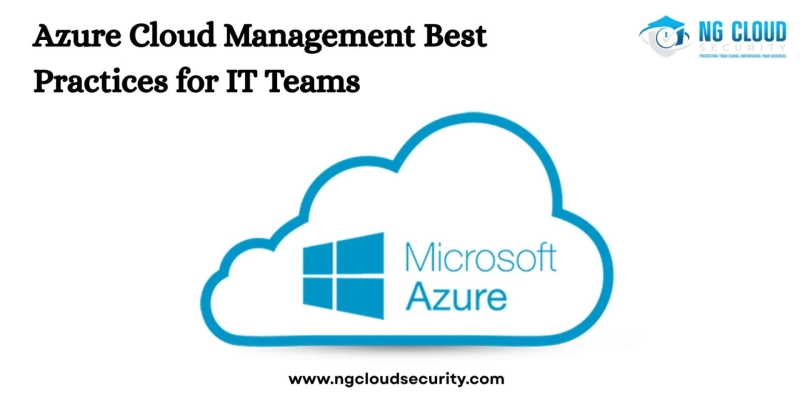Managing the cloud effectively is now an essential part of IT operations. With businesses moving rapidly to cloud environments, efficient Azure Cloud Management has become critical for stability, performance, and cost control. Whether you're managing virtual machines, storage, networking, or identities—having the right strategy helps IT teams handle cloud resources with clarity and control.
Cloud migration, especially Azure Cloud and Email Migration, is the first step in the process. But once workloads are in Azure, ongoing management becomes the real task. Here are some best practices every IT team should follow to manage Azure resources effectively.
Understanding Azure Cloud Management
Azure Cloud Management involves monitoring, maintaining, and administrating Azure services and resources. It includes cost tracking, security monitoring, performance tuning, policy enforcement, and ensuring compliance. Without a solid management plan, teams can face unnecessary costs, performance issues, and security gaps.
Key Azure Cloud Management Best Practices for IT Teams
1. Organize Resources with Management Groups and Tags
Start with a clean structure. Use Management Groups, Subscriptions, Resource Groups, and Tags to create a hierarchy. This allows better visibility, simplified billing, and easier governance. For example:
- Management Groups for different business units
- Resource Groups by project or function
- Tags for cost centers, environments (dev/test/prod), or owners
2. Implement Role-Based Access Control (RBAC)
Avoid giving broad access to team members. Use RBAC to assign permissions based on roles. This minimizes risks and keeps resources safe. For example:
- Developers only get access to dev environments
- Admins manage infrastructure only
- Finance can view billing data without making changes
3. Monitor Cost and Usage Regularly
Azure bills can rise quickly if not tracked. Use Azure Cost Management and Billing to review usage trends, set budgets, and create alerts. You can also:
- Analyze spending by resource or department
- Deallocate idle resources
- Choose reserved instances when long-term use is planned
4. Apply Azure Policies and Blueprints
Policies allow control over what can and cannot be done. For example, you can block high-cost virtual machines or enforce storage encryption.
Blueprints go a step further by allowing predefined sets of policies, roles, and resources to be applied together—ideal for standardizing environments.
5. Enable Security Monitoring and Compliance Tools
Security must be proactive. Use Microsoft Defender for Cloud and Azure Security Center to detect vulnerabilities and threats. Key actions include:
- Enabling threat detection for VMs, storage, and databases
- Applying Just-in-Time VM access to reduce exposure
- Using compliance dashboards to track regulatory status
6. Back Up Critical Workloads
Disaster recovery starts with regular backups. Use Azure Backup for data protection and Azure Site Recovery for business continuity.
7. Automate Routine Tasks with Azure Automation
Manual work leads to errors and delays. Automate tasks like shutting down VMs during off-hours, patching, or log clean-up using Azure Automation or Logic Apps.
Improving Visibility and Control in Azure Cloud Management
Monitor Performance with Azure Monitor and Log Analytics
Use Azure Monitor to collect metrics and logs across services. Combine it with Log Analytics to query and analyze performance data.
Key features include:
- Dashboards for real-time health
- Alerts for abnormal activity
- Insight into application behavior
Set Up Alerts and Notifications
Don't wait for users to report issues. Set alerts for CPU usage, memory consumption, cost thresholds, or failed deployments.
Notifications can be sent through email, SMS, or connected to incident management tools like PagerDuty or ServiceNow.
Optimize Cloud Governance and Compliance
Define Clear Naming Standards
Without proper naming, resources can become hard to manage. Define naming conventions and enforce them using policies.
Example: rg-finance-eastus-prod for a finance team resource group in East US for production.
Conduct Regular Audits
Audit your Azure environment periodically. Check for:
- Unused or duplicate resources
- Policy violations
- Security gaps
- Use the reports to improve configuration and reduce waste.
Consider Hybrid and Multi-Cloud Scenarios
If your organization also uses on-prem servers or other cloud platforms, Azure offers tools like Azure Arc to manage hybrid setups. Ensure consistent policies, monitoring, and access across environments.
Azure Cloud and Email Migration: Post-Migration Management
Migration is just the beginning. After moving to Azure, keep track of migrated resources. Use tools like Azure Migrate and Exchange Online Protection to manage the email side of things efficiently.
Train Teams and Document Everything
Your tools are only as good as the people using them.
- Offer regular Azure training
- Document architectures, policies, and procedures
- Keep an internal knowledge base for new team members
Final Thought
IT teams that apply structured Azure Cloud Management practices experience fewer disruptions, lower costs, and better performance. By focusing on security, automation, monitoring, and policy enforcement, organizations can build a resilient and well-managed cloud environment.
Visit NG Cloud Security to learn how expert cloud professionals can assist your team with Azure setup, governance, and ongoing support.


